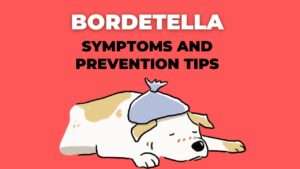As dog owners, we often experience the joy of having our furry friends by our side, but sometimes our pups may struggle with being apart from us. This is known as separation anxiety, a common issue among dogs that can cause distress for both the pet and the owner. Understanding separation anxiety and how to address it is crucial for fostering a happy and healthy relationship with your canine companion.
Contents Overview
What is Separation Anxiety in Dogs?
Separation anxiety is a behavioral disorder in which a dog exhibits distress or behavioral problems when separated from their owner or the people they are attached to. This can manifest in various ways, such as excessive barking, destructive behavior, house soiling, or attempts to escape.
Causes of Separation Anxiety
Understanding the underlying causes of separation anxiety is essential for effectively addressing the issue and providing appropriate support for your canine companion. While the exact reasons may vary from dog to dog, several common factors can contribute to the development of separation anxiety:
Past Traumatic Experiences:
Dogs that have experienced traumatic events in their past, such as being abandoned, rehomed multiple times, or spending time in shelters, may be more prone to separation anxiety. These experiences can create a deep-seated fear of being left alone and lead to heightened anxiety when separated from their owners.
Change in Routine:
Sudden changes in a dog’s routine can be unsettling and trigger anxiety. This could include moving to a new home, changes in the household dynamics (such as the addition of a new family member or the absence of a familiar person), or alterations in the owner’s schedule. Dogs thrive on consistency and predictability, so any significant deviations from their usual routine can disrupt their sense of security and stability.
Lack of Socialization:
Proper socialization plays a crucial role in a dog’s emotional development and ability to cope with various situations, including being alone. Dogs that have not been adequately socialized or have had limited exposure to being alone may struggle with separation anxiety. Without positive experiences and gradual exposure to being apart from their owners, dogs may become overly reliant on human companionship and exhibit distress when left alone.
Genetic Predisposition:
While the exact genetic factors contributing to separation anxiety are not fully understood, certain breeds are more predisposed to the condition than others. Breeds with strong attachment tendencies or those bred for companionship and loyalty, such as Labrador Retrievers, German Shepherds, and Cavalier King Charles Spaniels, may be more susceptible to developing separation anxiety. Genetic predispositions, combined with environmental factors, can increase the likelihood of separation anxiety in certain dogs.
Medical Issues:
In some cases, underlying medical conditions or physical discomfort may exacerbate separation anxiety symptoms. Pain, illness, or discomfort can heighten a dog’s stress levels and make them more prone to exhibiting anxious behaviors when separated from their owners. It’s essential to rule out any medical issues through a thorough examination by a veterinarian to ensure that the dog’s anxiety is not being exacerbated by an underlying health problem.
Signs of Separation Anxiety in Dogs
Recognizing the signs of separation anxiety is crucial for identifying the issue early and implementing appropriate strategies to help your dog cope. While the symptoms may vary from dog to dog, several common behaviors can indicate the presence of separation anxiety:
Excessive Vocalization:
Dogs with separation anxiety may engage in excessive barking, whining, or howling when left alone. This vocalization is often persistent and may intensify as the duration of separation increases. It serves as a vocal expression of the dog’s distress and an attempt to communicate their anxiety to their owners.
Destructive Behavior:
One of the hallmark signs of separation anxiety is destructive behavior, such as chewing furniture, doors, or other household items. Dogs may engage in destructive chewing as a coping mechanism to alleviate their anxiety or as a way to escape confinement. The destruction is often focused on items with the owner’s scent or objects near entry and exit points.
Pacing and Restlessness:
Before or during their owner’s departure, dogs with separation anxiety may exhibit signs of agitation, pacing, or restlessness. This behavior is indicative of their heightened anxiety and anticipation of being left alone. Dogs may move frantically around the house or exhibit repetitive behaviors as a manifestation of their distress.
House Soiling:
Despite being otherwise house-trained, dogs with separation anxiety may engage in inappropriate elimination indoors when left alone. This can include urinating or defecating in areas of the house, even if they have been properly trained to go outside. House soiling is often a result of the dog’s inability to control their bladder or bowels due to anxiety-induced stress.
Escape Attempts:
Dogs with severe separation anxiety may attempt to escape from their confinement or the home to reunite with their owners. They may scratch at doors, windows, or gates, or attempt to dig or chew their way out. Escape attempts can result in injury to the dog or damage to property and are a clear indication of the dog’s distress and desperation to be reunited with their owner.
How to Help a Dog with Separation Anxiety:
Addressing separation anxiety in dogs requires a comprehensive approach that focuses on alleviating stress, building confidence, and fostering independence. By implementing the following strategies, dog owners can help their furry companions cope with being left alone:
Gradual Desensitization:
Gradually acclimate your dog to being alone by practicing short separations and gradually increasing the duration over time. Start with brief absences, such as leaving the room for a few minutes, and gradually extend the time apart. Use positive reinforcement techniques, such as treats and praise, to reward calm behavior during separations.
Create a Safe Space:
Provide a comfortable and secure environment for your dog when left alone. This could include a designated area with their bed, toys, and familiar scents, or a crate if your dog feels safe and comfortable inside. Ensure the space is free from potential hazards and distractions that could increase anxiety.
Establish a Routine:
Stick to a consistent daily routine to provide structure and predictability for your dog. Establish regular feeding times, exercise sessions, and potty breaks, as well as a consistent departure and return routine. Consistency helps reduce anxiety by creating a sense of stability and security for your dog.
Provide Mental Stimulation:
Engage your dog’s mind with interactive toys, puzzle feeders, and enrichment activities to keep them mentally stimulated and occupied while you’re away. Mental stimulation can help alleviate boredom and anxiety and provide a positive outlet for your dog’s energy.
Practice Departure Cues:
Desensitize your dog to departure cues, such as picking up keys or putting on a coat, by incorporating them into your daily routine without actually leaving. This helps prevent your dog from associating these cues solely with separation and reduces anxiety triggered by their presence.
Counterconditioning and Desensitization:
Use counterconditioning and desensitization techniques to change your dog’s emotional response to being alone. Pairing positive experiences, such as treats or toys, with periods of separation can help your dog associate being alone with positive outcomes, gradually reducing their anxiety over time.
Seek Professional Help:
If your dog’s separation anxiety is severe or persistent, seek guidance from a veterinarian or certified animal behaviorist. They can offer personalized advice and may recommend behavior modification techniques, medication, or other interventions to help manage your dog’s anxiety effectively.
Avoid Punishment:
Avoid punishing or scolding your dog for anxious behavior related to separation anxiety. Punishment can exacerbate anxiety and undermine trust between you and your dog. Instead, focus on positive reinforcement and compassionate support to help your dog feel safe and secure.
Bottom Line
Separation anxiety can be a challenging issue for both dogs and their owners, but with patience, understanding, and the right approach, it can be managed effectively. By recognizing the signs, understanding the causes, and implementing appropriate strategies, you can help your dog feel more comfortable and secure when left alone. Remember, addressing separation anxiety is a process that requires time and dedication, but with love and support, you can help your furry friend overcome this obstacle and thrive.
























+ There are no comments
Add yours